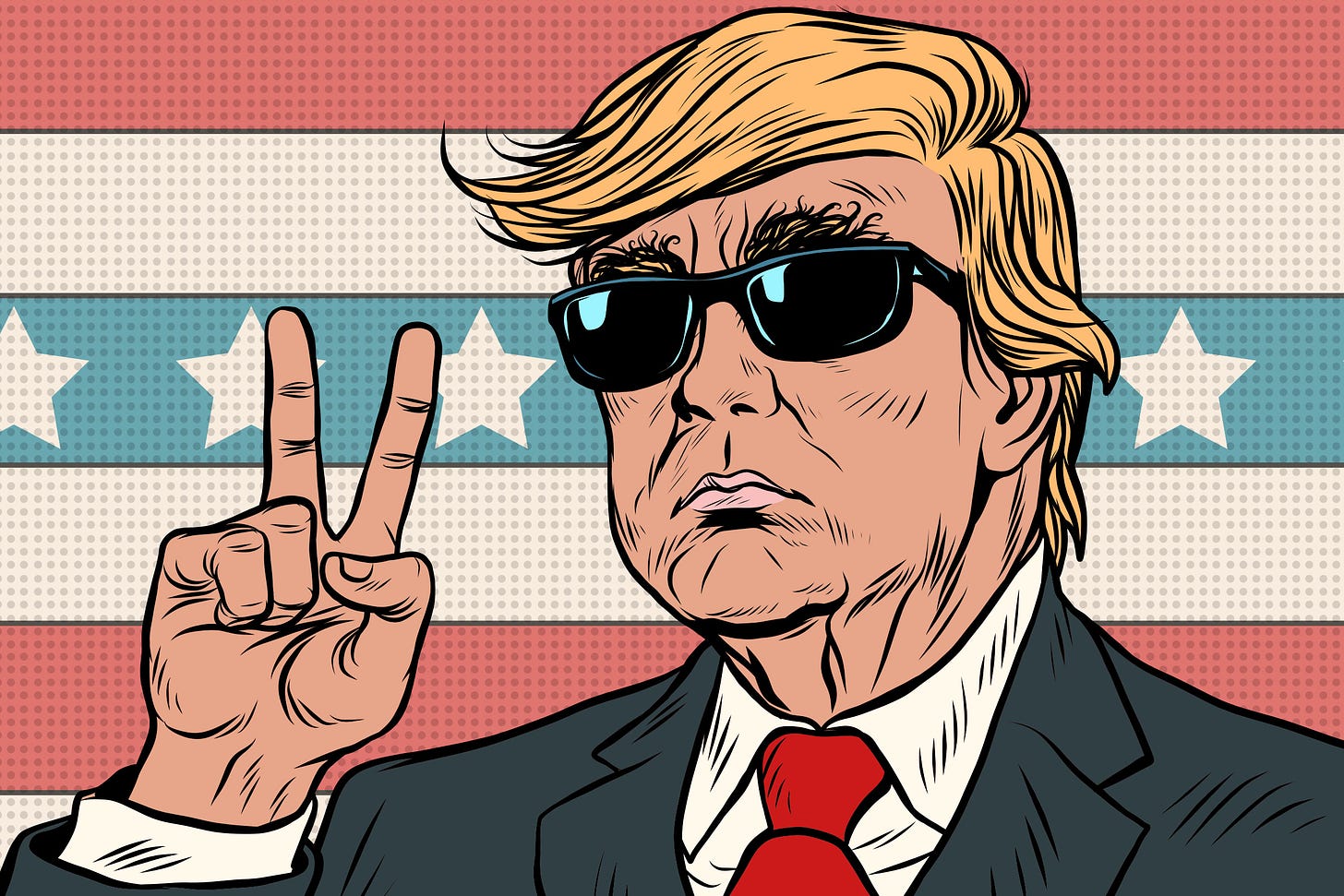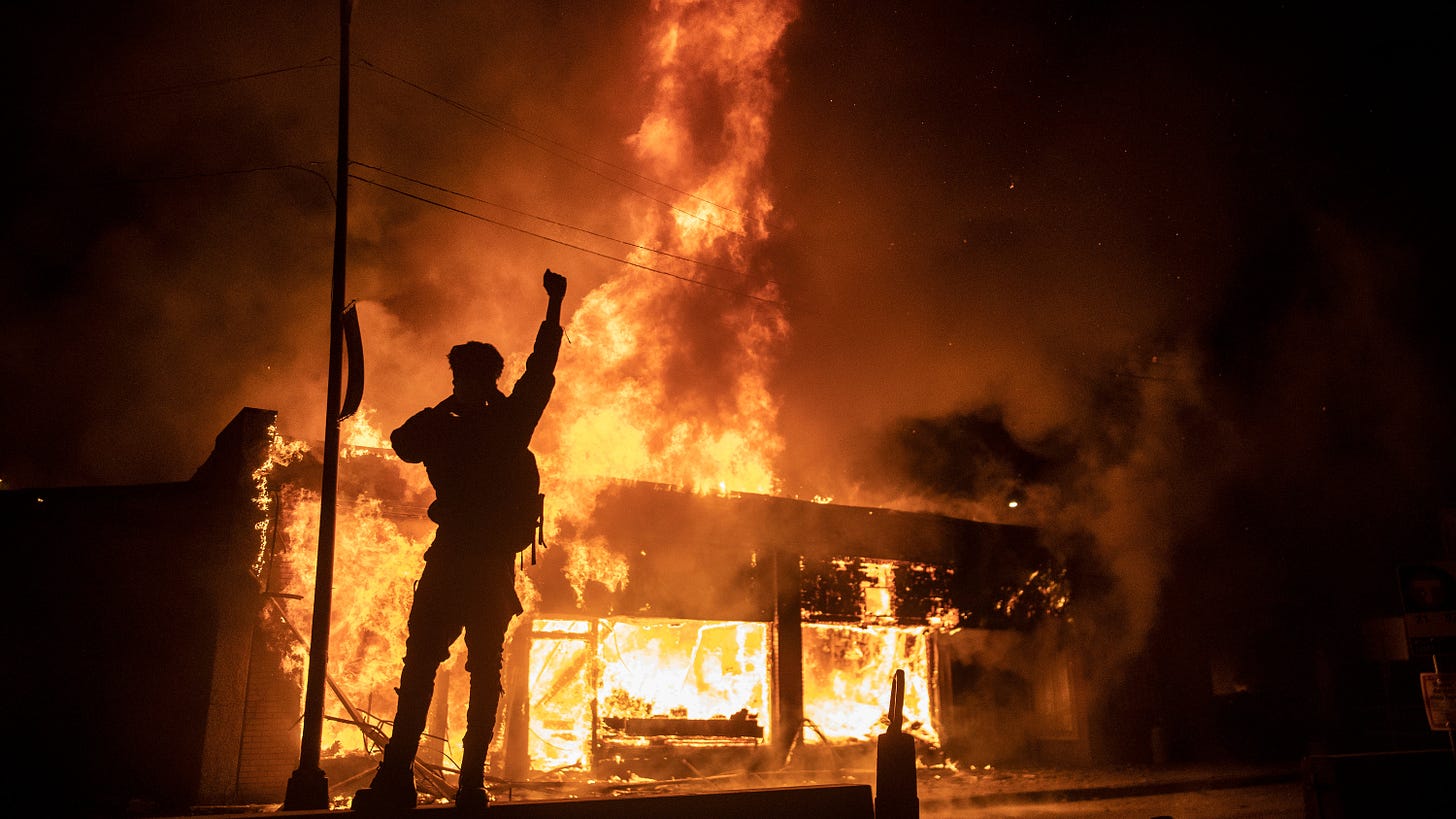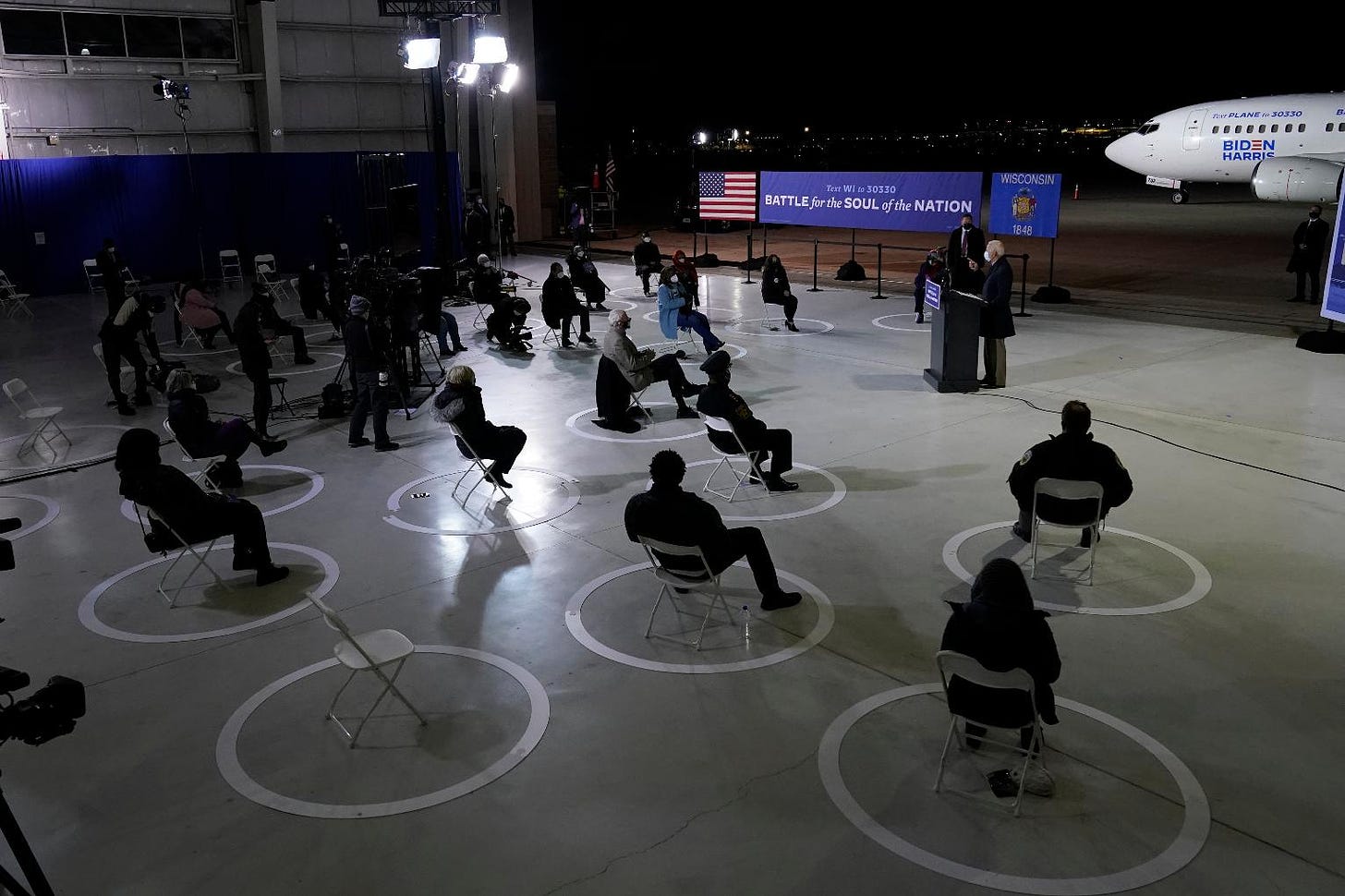Can Trump Pull It Off Again? 2020 Election Forecast
Judging by the polls there seems to be no way that Donald Trump could repeat his success from 2016. Back then the polling companies were caught off guard by shifting sentiments they did not account for and Trump surged to a historic victory, clinching 306 electoral votes.
That said, the national forecasts were not that far off - average from all popular vote polls was 3.2% on RealClearPolitics and 3.6% on FiveThirtyEight in favor of Clinton, compared to 2.1% she eventually was ahead by. Today that gulf is 7.2% and and 7.9% respectively, predicting a huge win for Joe Biden.
Of course, as we know, winning the popular vote is meaningless if you don't win it at the state level, securing electoral votes in the process - as Hillary Clinton and her supporters painfully experienced. However, since the race was so close in 2016, Trump was able to flip a few key states by razor thin margins - like Wisconsin by 0.7%, Michigan by 0.3%, Pennsylvania by 0.7%. These three gave him 46 electoral votes, securing his ultimate victory (winning Florida would not have been enough).
This year he's not only trailing in those states by 4 to 6% according to the latest polls but he's seeing a drop in places like Texas, which he won by 9% in 2016 which is predicted to shrink to about 2.3% in 2020. He seems to be losing ground not only in the battleground, swing states but even in Republican south.
In other words - he has a bigger gap to seal, while he appears to be on the back foot. Is there any hope for Trump?
Yes, there is.
Can the polls be trusted?
The problem with the polls is that they are as good as the people who design them. Asking random strangers for answers isn't enough - you have to accurately predict the turnout of various groups in the society, divided by education, economic status, race, place of residence and so on.
To do this you rely on both past patterns as well as as much as people are willing to reveal about themselves to you.
The polls in 2016 may have been fairly accurate at the national level - but utterly failed at a finer granularity of the states, where voter turnout in many urban Democratic strongholds (like Detroit) was not as high as expected. So, while the forecasts for the entire US were inaccurate by less than 2%, predictions for Pennsylvania were off by nearly 3%, for Michigan by close to 4%, Ohio by 6% and for Wisconsin by a whopping 7.2% (RCP average of 6.5% for Clinton turned into 0.7% for Trump when people voted).
Of course the pollsters acknowledged their mistakes (like underestimating the non-college educated voters in 2016) and corrected their methods but there is still no guarantee that they are accurately going to predict how people behave on Tuesday - because the situation has greatly evolved in the past four years.
This was already a problem in 2016, when many felt awkward admitting to voting for Trump. The situation in 2020 can be far worse as, in the current political climate, people are no longer only embarrassed - they're scared.
Witnessing months of violence and riots in the streets, reading about people losing jobs or being targeted for their conservative views (both online and in the real world), it's quite likely that far fewer will reveal their political preferences - especially to a stranger who called them out of the blue.
It's what is known as social desirability bias - with respondents giving answers that they believe would be more socially desirable and make them look better in the eyes of the person they're speaking with. It's a factor that pollsters are not well equipped to correct - but there are some ways to spot it.
There are three primary methods of polling:
Live phone calls - where a person simply calls you for a short interview.
IVR - interactive voice response, where the call is conducted by a machine, asking you scripted questions.
Online - various methods of polling on the internet.
Nate Silver from FiveThirtyEight argued in 2019 that Live Polls are still the most accurate but Rasmussen Reports - which was among the most accurate pollsters in 2016 (it was spot on about the gap of two percent in favor of Clinton, forecasting 45% to 43% - vs. the ultimate result of 48% vs . 46%), swears by using automated calls, for the privacy they give, which reduces the impact of the social desirability bias.
When you look closely at the past and current polls, you will notice that those which use IVR at least to some degree, tend to report much smaller distance between the two candidates than Live and even Online polling.
Throughout the last week Rasmussen has been posting daily polls which varied between +1% for Trump to +3% for Biden. In the meanwhile, the national RCP and 538 averages are, as I said, over 7%, with some polls - like NBC/WSJ, Economist/YouGov or Reuters/Ipsos - giving Biden a lead of over 10% nationally.
At extreme ends the polling difference is as wide as 12% - from 1% advantage for Trump to 11% advantage for Biden. Someone has had to get it terribly wrong.
Another pollster who is dismissive of this traditional approach is Robert Cahaly of the Trafalgar Group - a somewhat controversial figure on the scene but one who has considerable successes to his name. Trafalgar not only correctly predicted Trump's victory in 2016 but also nailed the exact number of electoral votes at 306 and accurately called all the surprises including Pennsylvania, Michigan, Wisconsin, Florida and North Carolina for Trump. The company was also the only one to have predicted the victory of Ron DeSantis in the race for governor in Florida in 2018, which he was widely expected to lose by about 4% to his Democratic contender.
Trafalgar does not conduct national polls, focusing instead on tightly fought races in battleground states, where social desirability bias can be the strongest (especially in 2020).
According to its latest surveys Trump is ahead in Florida, Ohio, Arizona, North Carolina, Pennsylvania and Michigan, narrowly losing Wisconsin and trailing a bit further behind in Nevada and Minnesota. This could give him between 270 and 300 electoral college votes, assuming all other states vote along the expected party lines.
Here's what Cahely said in the latest interview by Politico (what I wholeheartedly agree with):
"I’m finding that people are very hesitant to share their preference for Trump, because now it’s not just being called “deplorable.” It’s people getting beat up for wearing the wrong hat, people getting harassed for having a sticker on their car. People just do not want to say anything." Robert Cahely
Excitement
A bit paradoxically, parallel to the shy voters, anxious about revealing their preferences there's also a huge wave of enthusiasm among the rest of the Trump electorate - much bigger than in 2016 as now people know how his presidency turned out to be. These are the extroverted and assertive supporters, usually from states and neighborhoods that are already very red.
Ironically, their behavior is in part what may drive the shy ones into hiding - they do not want to be associated with the "in your face" Trump voters even if they support him.
Either way, these die hard fans are filling his rallies - wherever he goes he can count on attendance of thousands, something that cannot be said of Joe Biden.
Compared to Joe Biden filling up car parks with at best a few hundred vehicles (if that) I just don't see the sort of mobilization among the Democrats.
Of course Biden campaign plays on the pandemic fears and portrays itself as responsible by maintaining social distance and keeping the numbers low. But does anybody seriously think that if it wasn't for Covid-19 stadiums would be filled to watch Joe speak?
He may be more likable than Clinton - a dithering, mumbling grandpa nobody can really hate - but he lacks charisma. He's not a leader, he's prone to making gaffes and, unlike Trump, he certainly does not inspire people to follow him.
Democrats have essentially made this election a plebiscite about Trump. A vote for Biden is really just a vote against the sitting president.
But is this the right time for it?
It may turn out that the pandemic is what is going to sink not Trump but Biden. Are people really reassured by promises of tax raises or dismantling the petroleum industry, during such a major crisis? It's not only about health and lives - it's about millions of livelihoods and jobs that are at stake. And Democrats don't seem to have an idea for a solution other than opposing anything that Trump has done.
They also seem to have forgotten that before the pandemic consumer confidence was at a 20-year high while small-business and manufacturers almost unanimously reported favorable business conditions - a huge improvement over Obama's presidency.
This opinion piece published in the Financial Times in May 2019 further extols accomplishments of the Trump administration, quote:
"By 2016, nearly 74 per cent of American manufacturers reported that they were in an “unfavourable business climate”. Two years into Mr Trump’s administration, just 18.5 per cent of American manufacturers reported the same thing. Similarly, in 2016, 64 per cent of manufacturers were optimistic about the economy, rising to 92 per cent last year, a 20-year high. The US is near its lowest unemployment rate in 50 years and consumer confidence is at the highest level in almost two decades."
As we're in the middle of the worst pandemic in a century are people seriously going to dismiss these achievements and vote for Biden who wants to reverse tax cuts and destroy oil & gas in a car-heavy country? Environment is an important topic - but not more important than jobs. In times of greater prosperity and stability it may be politically beneficial to wheel out more progressive ideas - but right now? Especially as the fight isn't really about nationwide popular support but over hotly contested swing states, several of which rely on the fossil fuel industries for survival - and have also seen an outflow of millions of jobs to Asia in the aftermath of the 2008 meltdown, which is why they swung to support Trump in 2016.
Is this the way Joe Biden is supposed to win back their support?
This is another reason polls have to be viewed with a good deal of skepticism. That Biden may enjoy strong support from wealthy, urban, coastal voters who are mainly employed in services is no surprise. It's also extremely likely that he is going to win the overall popular vote, simply because traditionally Democratic states have more inhabitants.
But his behavior, the way his campaign is conducted and rather unconvincing character of his promises don't seem to be tailored to the blue-collar voters, the entrepreneurs, business owners suffering due to crippling lockdowns while the Democratic party openly endorsed destructive protests that caused the worst damage in the history of public riots in the US.
Cracks are also beginning to show on the Democratic base which is not turning out to vote early the way the party had hoped - like in the crucial county in Florida, Miami-Dade - more about it in this report from Politico:
Hints from Facebook
There's also social media data that should trouble the Democrats - Facebook Engagement. I have collected 20 different pages below, representing more-less left and right wing outlets, news sites and other shows, sorted by their number of fans.
One thing that immediately jumps at you is the enormous engagement Trump receives ahead of everybody else. 111 million in the past week (it's a daily moving figure), compared to Joe Biden's 27 million. Of course, Trump has more fans (including abroad) and he's a more controversial figure, so he may motivate more people to respond (whether positively or negatively).
Still, however, for all the talk about how this election is about saving America from some sort of a disaster that Trump brought on it, there seems to be no meaningful response from the left. You would imagine that mobilization for such a momentous, watershed event would be extremely high - and it seems to be, but not among the Democrats.
If you look at other conservative pages, Fox News is absolutely steamrolling CNN (not to mention other outlets), despite having fewer followers. Even Breitbart is outperforming (!) Joe Biden himself (and his supposedly massive war chest of hundreds of millions of dollars) in the final days of the campaign.
The Young Turks - a left-wing online show which suffered a spectacular emotional meltdown when Trump won in 2016, calling for war not only on Republicans but the failed Democratic party that allowed Trump to defeat Hillary - is struggling to make waves too. After all, you would expect the left-wing tech-savvy millennials, Gen Ys and the Zoomers to be flooding the web - especially during pandemic lockdowns. But they're not.
Even Barack Obama, despite his huge following and stature, only joined Biden in the final days and doesn't seem to be very active on social media, keeping his distance - probably aware that any splashback from Biden's failures (or scandals, should they ultimately prove true) would hurt him. Either way, his frostiness certainly does not help his former VP.
These figures are more telling than Twitter's would be as Facebook is a platform better suited for various types of content - not only text but video, live feeds from rallies, images, memes and so on. And yet the supposedly modern Democrats have failed to tap it properly. Or perhaps their supporters aren't all that engaged after all...
Verdict
So, what can we expect on November 3rd? Is (almost) everybody wrong again? Are the polls so disastrously skewed that their failure is going to be even more spectacular than in 2016? As preposterous as it may sound right now, it may very well be so. Here are my cautious predictions:
The overall turnout is going to be record-breaking. This election is very important to both camps. 4 years ago many people may have chosen not to participate, assuming Clinton had it in the bag. Not this time.
Joe Biden is going to win the popular vote. Staunchly Democratic states and their urban centers are going to turn out in big numbers if only to show their disdain for Trump.
Trump is going to win the electoral college and the presidency with a sub-300 EC vote tally.
Republicans will narrowly defend the Senate. Democrats will keep the House.
Perhaps I'm biased, perhaps I'm deluding myself, perhaps I'm as mistaken as Clinton's supporters were in 2016. But witnessing the huge enthusiasm of the pro-Trump crowd, coupled with the horrific near-totalitarian overreach of the left during the past 4 years, the bullying and cancelling opponents, censoring unflattering content and violent riots it unleashed during the worst pandemic in a century, I just can't bring myself to believe the polls - especially as Joe Biden is easily one of the worst candidates ever fielded by the Democratic party.
Of course we may be in for a contested election. Some states will not provide the final tally of the votes until many days after November 3rd. And if the race is tight, the recounts may end up in courts which are going to decide what the final results are.
But when the dust settles, when all is said and done, I still think Trump is going to remain in the White House for the next 4 years.







